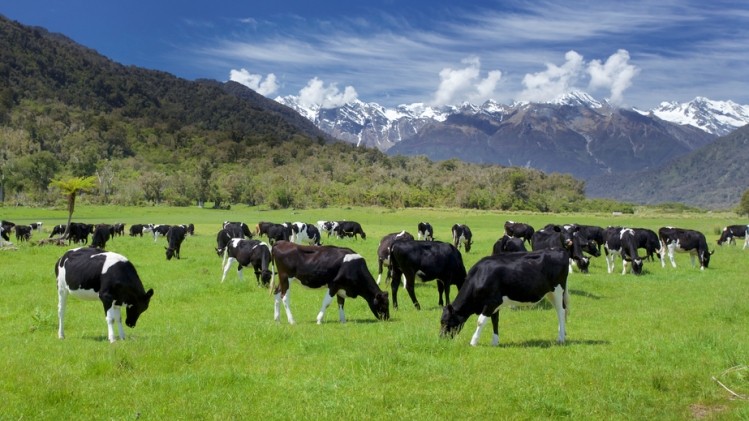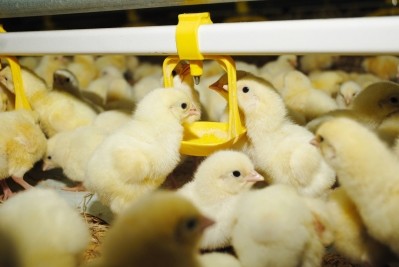Dispatches from World Nutrition Forum
What makes a more feed efficient dairy cow?

An ongoing research project funded by a grant from the US Department of Agriculture (USDA) and involving several universities and almost 7,000 cows has been focused on a way to use genomics to better track and predict feed efficiency, said Michael VandeHaar, a dairy nutrition and metabolism professor with Michigan State University. We caught up with him at Biomin’s World Nutrition Forum last month to talk about his research.
“Feed efficiency is a complicated trait, it’s a complex trait, [and] there’s a lot of stuff that you could consider,” he said. “If we breed for cows to be more energetically efficient we can achieve a lot of these other goals along the way.”
The research has focused on improving feed efficiency through capturing more net energy in milk than in maintenance use and improved digestion or metabolic process, he said.
Dilutions of maintenance and energy
Not all of the energy that cows take in is used for production of milk or meat, said VandeHaar.
“To improve efficiency we need to improve the conversion of this GE [gross energy] to NE [net energy] and increase the amount of milk produced relative to maintenance requirements,” he said.
Efficiency is related to productivity through the “dilutions of maintenance,” he said. The more a cow eats, the less of that feed goes to basic bodily needs.
“If we can increase milk per unit of body weight then we should increase efficiency,” he said. “We can do that either by increasing milk or decreasing maintenance and maintenance is highly related to how big an animal is.”
Limiting animal size, increasing milk production or doing both are important improvements, he said. But decreasing the maintenance needs and residual feed intake (RFI) of the cow also is important.
The group’s research is finding that having a cow with a negative RFI, or that is more efficient, have a trait that is both inheritable and repeatable, he said. Researchers have repeated the finding for cows getting high starch or high fiber diets and in different climates.
“We want to make sure that, as we select for cows today, we don’t make a mistake in which [ones] are most efficient [taking into account] different diet types,” he added.
Picking more efficient cows
Producers are already asking how they can select for cows with better feed efficiency, said VandeHaar. Some producers in Australia and the Netherlands are starting to select for feed efficiency, but, in the US, the knowledge not completely available.
“We have data on maybe 7,000 cows and our goal for the USDA grant was 8,000 cows," he said. “In order to be accurate when we select for animals using genomics, we really ought to have more than 8,000.”
A continuing reference population also needs to be established, he said.
Currently, the research group is using a genomic system to select for the trait, he said. It involves the analysis of single nucleotide polymorphism (SNP) genotypes.
An SNP is a single base that varies frequently in the population and each SNP represents a whole segment of DNA, explained the researcher. Each SNP by itself may not have a strong relationship to a trait like feed efficiency, but combining information for thousands of SNPs can correlate well with a trait, he said.
Through the USDA grant, VandeHaar said the team is currently determining if SNP genotypes are correlated with feed efficiency. The project is measuring individual feed intakes, BW, and production data in university herds. If the researchers find a relationship, then the SNP genotype can be used to identify potential sires that should confer higher feed efficiency to their offspring, said VandeHaar.
However, it is better to be cautious when using an aspect like feed efficiency to breed cows, because there could still be unintended consequences, said VandeHaar.
“You could do some stupid things breeding for cows that use less feed to give us milk,” he said. “We don’t want it to be negatively correlated with fertility, or longevity and find that out after we’ve started doing it.”
He added that the US may have reached a point where that determination will be possible in about two years.
Feed usage and management
However, genetics are not the only factor that can influence feed efficiency, said VandeHaar. There also can be production practices that alter output for cattle like how closely diets are tailored to stage of production.
Although there are many farms that only use one total mixed ration for their cattle, there are different feeding goals during the stages of lactation, he said.
“If we think about protein, protein efficiency parallels energetic efficiency often,” he said. “But protein is often overfed, especially later in lactation, so if we have several groups of cows within a farm, we can feed high protein diets with expensive supplements early on, cheaper feeds and lower protein diets later on and maximize feed efficiency for both energy and protein.”










